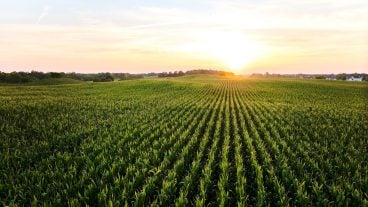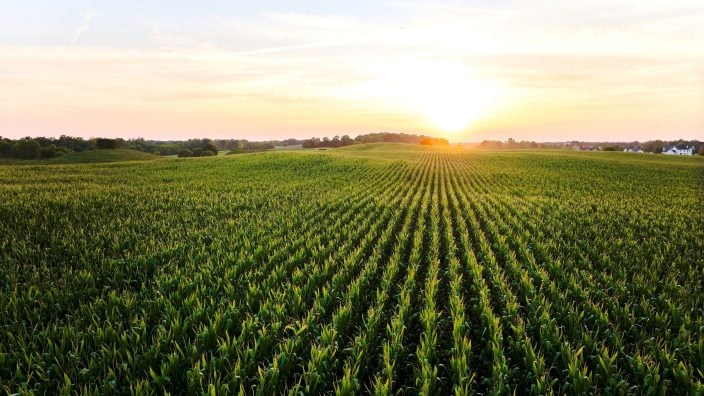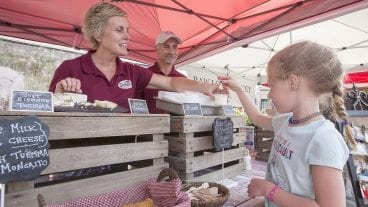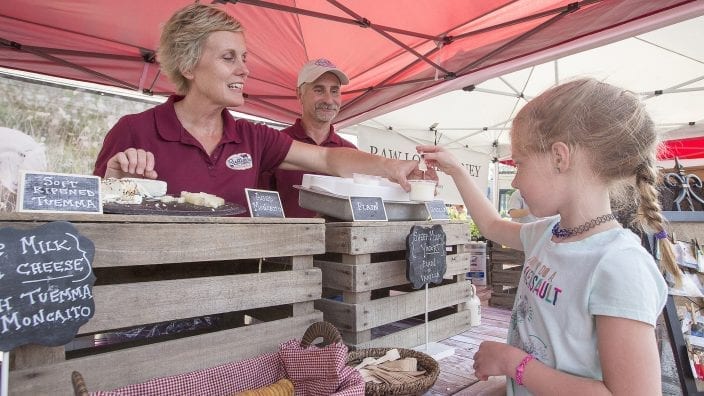Farmer’s Guide to Trucking Regulations available to Ohio Farm Bureau members
The guide includes a farm driver checklist, overview of state and federal regulations and exemptions, CDL qualifications and more.
Read More
Initiative of a passionate teacher and the cooperation of many other teachers, PTA, a local restaurant and many volunteers resulted in a wonderful learning experience for a group of local first-graders. It was like an envirothon for young students.
Envirothon? It’s an educational competition for high school students designed to stimulate, reinforce and enhance interest in the environment and natural resources. This annual outdoor, hands-on event does just that and I am glad that I was able to participate earlier this month.
Two of my fellow Farm Bureau members and I were at one of the six stations the students visited. Charged with talking about agriculture, we used a great book, “How Did That Get In My Lunchbox,” by Chris Butterworth, to guide our discussion. The book connects children to the food in their lunch-boxes by showing the effort and skill needed to produce food such as bread, cheese, apple juice and chocolate chip cookies. We were surprised that most knew that farmers had to grow wheat which would be made into flour and then bread. It was later in the day we found out that most of this knowledge was gained while playing a computer game called “Minecraft.”
When we asked them about the chocolate chip cookies and how it came from a farm, they were a little confused, thinking that a farmer could grow a cookie. They soon caught on that farmers grew the ingredients in their cookies, like flour, sugar and cocoa beans.
We included discussion, as the book does, on how important are the truck drivers who transport products from the farm to the processing plants and then to the grocery stores. As are those who work hard to process and get foods ready for consumers to buy.
The book also introduces the basic food groups, so we broke up into small groups to play a game. Taking turns, they were able to choose a picture of a food and place it in the food group that they thought it belonged. It was great to see how the children talked about the food and made their decisions. It brought up discussion on different kinds of dairy products and vegetables. Where do you put pizza? Tomatoes are actually a fruit and strawberries are vegetables!
Wrapping up each 30-minute session, we played a game matching pictures of farm animal mamas with their babies. Most were pretty easy, only getting hung up on the difference between a duckling and a gosling. We added fun facts about the animals, like a mother pig could have up to 15 babies at one time an dhow the wool from the mother sheep was used to make cloth for clothing and other products.
One especially memorable moment came after playing this game. We asked for questions and a little girl state that she was offended that a baby goat is called a kid. After my initial bewilderment, I responded that baby goats had been called kids much longer than people her age, and if anyone should be offended, it should be the goats.
It was an awesome event that I wish every first-grader could experience. Even though it was only 30 minutes of interaction, I believe we shared an important lesson. I know I learned a thing or two as well, like I am not conditioned to be a full-time first-grade teacher, but I am ready to volunteer for next year’s event. And that students still have a long way to go in education about milk – brown cows do not give chocolate milk!
Submitted by Mary Smallsreed, a Trumbull County Farm Bureau member, who grew up on a family dairy farm in northeast Ohio.


The guide includes a farm driver checklist, overview of state and federal regulations and exemptions, CDL qualifications and more.
Read More


The emergency fuel waiver to allow the sale of summer gasoline blends containing 15% ethanol will lengthen the period during which Americans can continue buying E15 from June 1 to Sept. 15.
Read More

The Small-Scale Food Business Guide covers federal and state regulations for selling food products such as raw meat, dairy, eggs, baked goods, cottage foods, fruits and vegetables, honey and more.
Read More

New resources and technology are broadening the different types of sales tools and strategies available to farmers.
Read More

ODA will enroll 500,000 acres into the program for a two-week sign-up period, beginning April 22, 2024, through May 6, 2024. Contact local SWCD offices to apply.
Read More

Katie Share of Columbus has been named ExploreAg and Youth Development Specialist for Ohio Farm Bureau.
Read More

Mary Klopfenstein of Delphos has been named Young Ag Professional and Ag Literacy Program Specialist for Ohio Farm Bureau.
Read More

The plan has been updated to give sole proprietors access to more rate stability and a smart solution that offers potential savings on health care.
Read More

The American Farm Bureau Federation, in partnership with Farm Credit, is seeking entrepreneurs to apply online by June 15 for the 2025 Farm Bureau Ag Innovation Challenge.
Read More

Adele Flynn of Wellington has been elected treasurer of the Ohio Farm Bureau Federation and now holds the third highest elected office in Ohio’s largest and most influential farm organization.
Read More